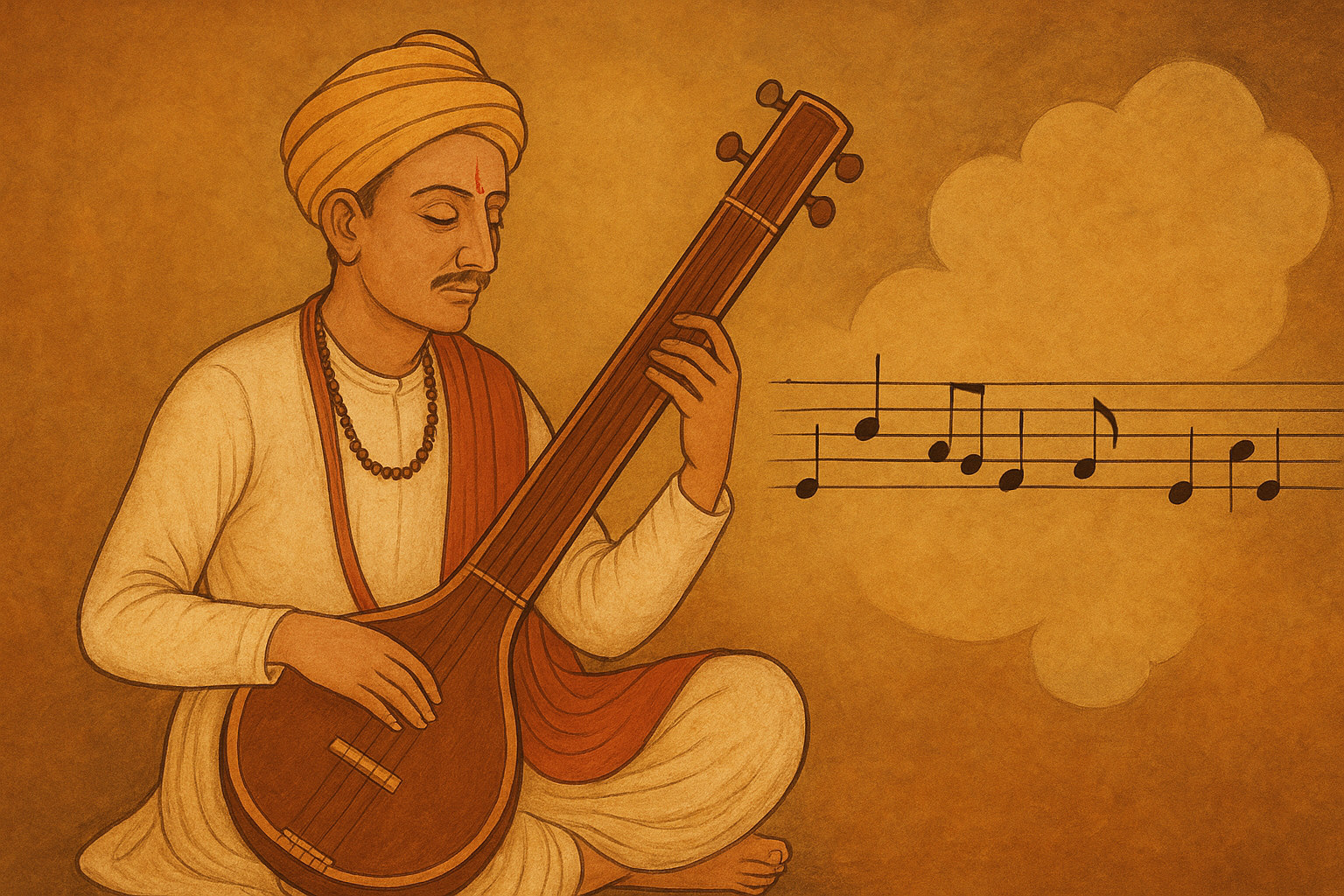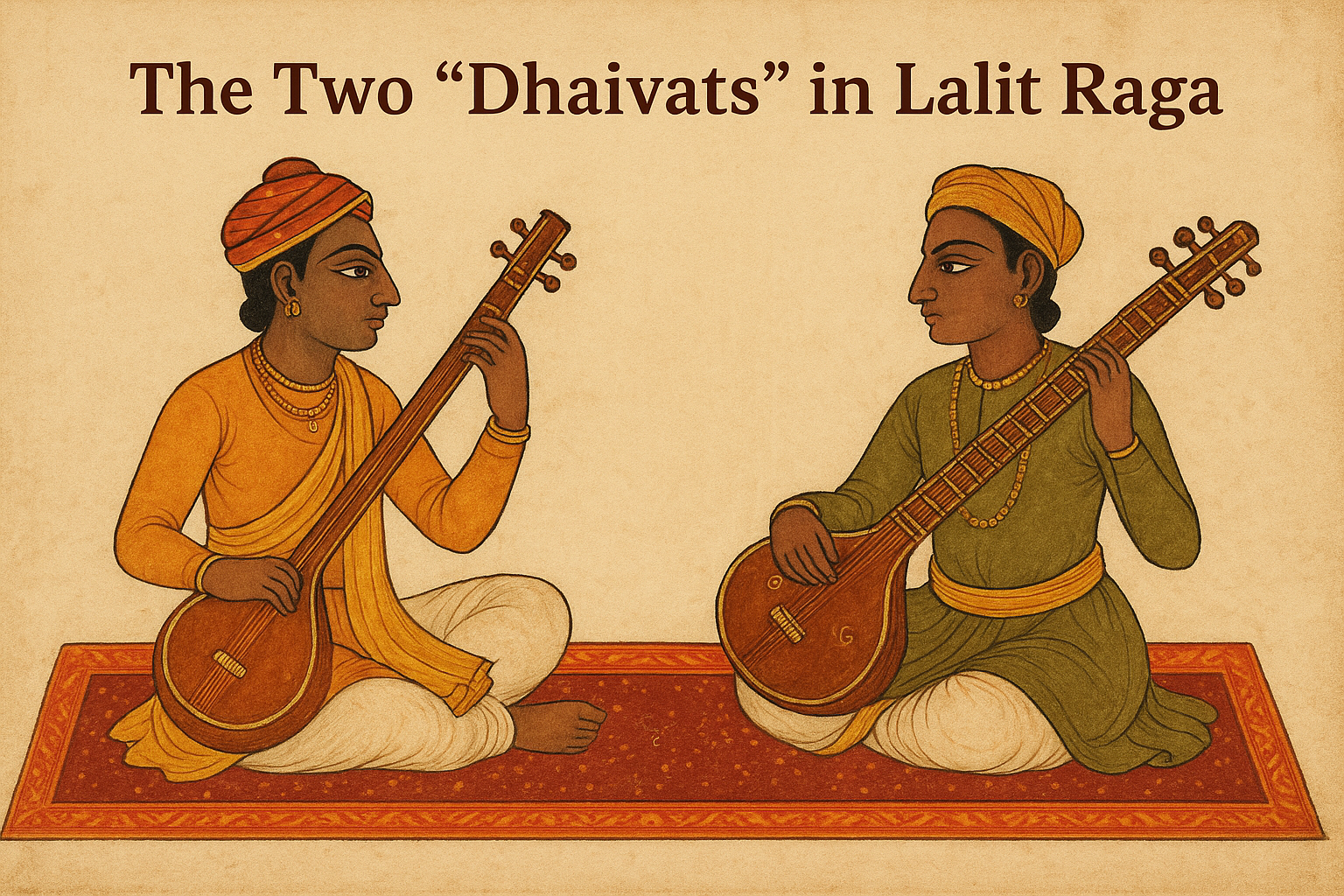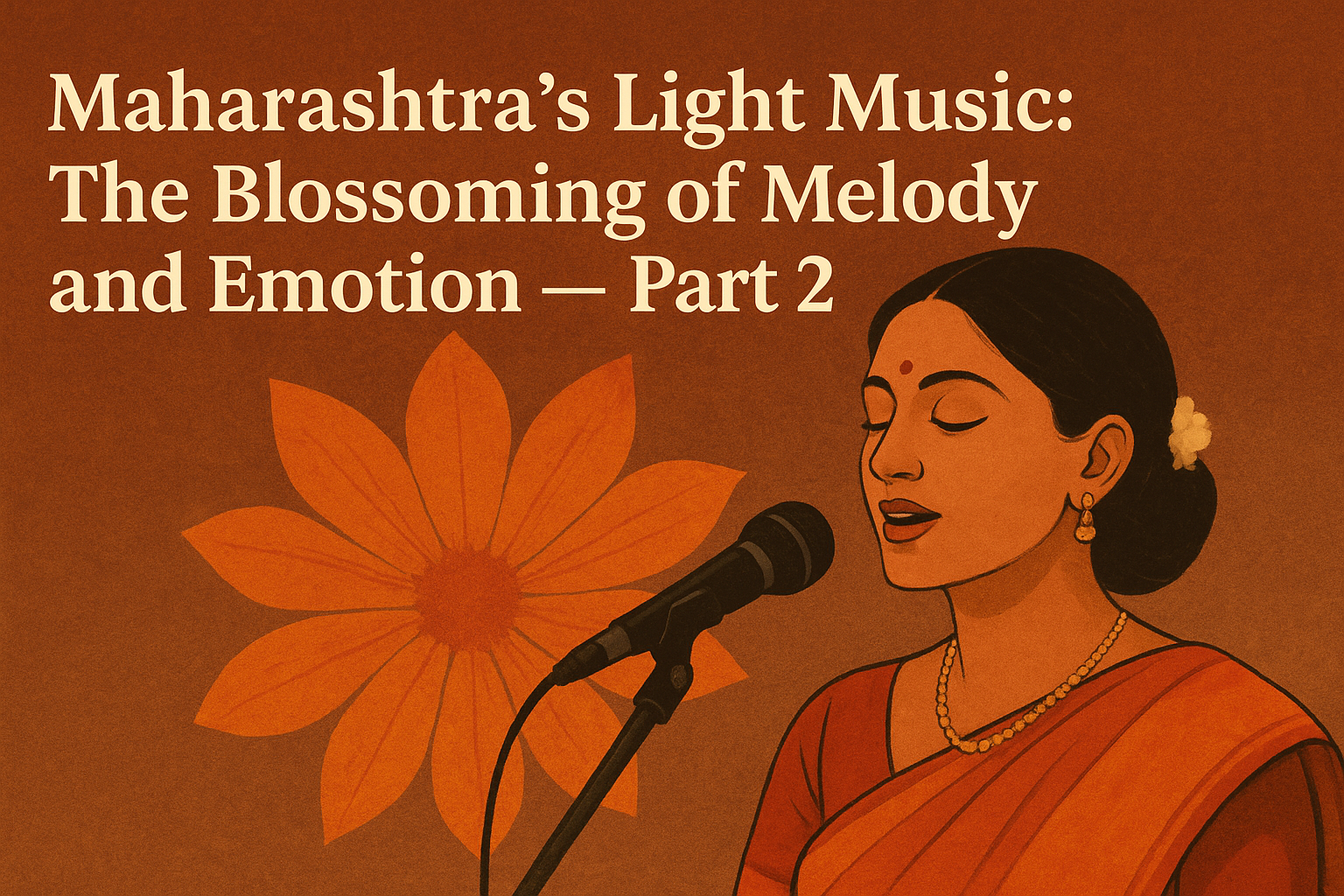Indian classical music is uniquely distinguished by two major streams: one is melody-centric music, commonly referred to as classical music, and the other is lyric-centric music, known as light music or Sugam Sangeet.
Classical music includes compositions such as Dhrupad, Dhamar, Khyal, Tappa, and Thumri. Light music, on the other hand, encompasses Ghazals, Bhavgeet, Bhakti Geet, and film songs.
In classical music, compositions are based on melodies, and these compositions are called cheezas or bandishes. In rag-based singing, a bandish represents a fixed and structured melodic framework. The rest of the improvisation in a raga performance—astayi and antara—is the artist’s spontaneous and creative expression. In this sense, raga performance is a form of unbounded music.
The creation of a bandish is driven primarily by spontaneous inspiration. Whether the resulting composition is deemed “superior” or “ordinary” is secondary—the essence lies in the creativity and musicality of the artist. A bandish born from genuine inspiration tends to be ideal and captivating.
Rules for Composing a Bandish
Classical music is melody-centric, so in bandish composition, melody takes precedence over lyrics. The bandish is primarily anchored in the raga, and its structure must respect the rules of the raga and the rhythm (taal). While there is no rigid scientific formula for composing a bandish, the following guidelines are generally observed:
Clear Raga Expression:
The bandish must clearly reflect the raga it is composed in. Key notes (vadi, samvadi), raga-defining phrases, and characteristic melodic movements should be used so that listeners can immediately recognize the raga.Use of Raga Elements (Ragang):
Bandish composition should incorporate essential elements of the raga. Consider whether the raga emphasizes the purvang (first half) or uttarang (second half). Both the astayi and antara should feature prominent raga elements in clear melodic form.Melodic Harmony:
The harmony of notes defines the identity of a raga. While composing, proper use of these melodic sequences ensures the raga’s clarity.Free Notes (Mukt Swar):
Some ragas allow certain “free” notes that can be used creatively. Skilled use of these notes enhances the bandish.Conceptual Planning:
The composer should have a clear vision of the bandish—its starting note, number of lines in the astayi and antara, and how each lyrical idea will be developed. A concrete mental blueprint is crucial.Resting Points:
Strategically placed rests (vishram sthaan) for words or melodic phrases are essential to convey meaning effectively.Integration of Lyrics and Melody:
Lyrics (geetvaakya) and melodic phrases (swarvaakya) should complement each other attractively. The alignment must convey both meaning and raga essence seamlessly.Meaning of Lyrics:
Although classical music prioritizes melody, careful attention must be paid to the lyrics. Improper division of words can distort meaning, making the song difficult to follow. Meticulous planning of lyrics and notes is essential.Rhythm and Taal:
Every bandish must fit within a rhythmic cycle (taal). Words must be divided according to the beat without compromising their meaning.Coordination of Mukhdas and Astayi-Antara:
The opening (mukhda) and subsequent sections (astayi and antara) should be arranged so that repeated renditions of the mukhda are smooth and consistent.
The Art Beyond Rules
A bandish composed while strictly following these guidelines can be excellent, but occasionally, a bandish that bends some rules may achieve brilliance. Spontaneity is the enduring essence of a bandish. The artist’s skill determines how effectively it is presented.
Unlike Western music, where compositions are often performed exactly as written, Indian classical music is a blend of the composer’s imagination and the performer’s creativity. The artist interprets and brings the bandish to life, adding their personal touch. Historical masters like Swami Haridas, Tansen, Baiju Bawra, Adarang, Manrang, and in the thumri tradition, Lalanpiya, Arvatarpiya, Sandhipiya, created bandishes that continue to be performed in the classical tradition.
When a bandish achieves perfect balance between melody and lyrics, it manifests the harmony of Shiva and Parvati, evoking eternal joy and leaving a lasting impression on the listener.
The Importance of Words in Classical Singing
While melody is central to classical music, lyrical composition cannot be ignored. In vocal music, the beauty of a bandish arises from the union of swar (melody) and shabd (lyrics). Even in film music, which often emphasizes lyrics, the integration of words and melody breathes life into music. Without this interplay, compositions may feel lifeless despite technical perfection.
Modern artists like Pandit Jasraj exemplify the seamless integration of melody and lyrics, demonstrating how classical music thrives when both are harmoniously combined.
This blog post captures the philosophy and technical guidelines of bandish composition, offering insights into why classical music remains a living, evolving tradition where creativity and discipline coexist.


